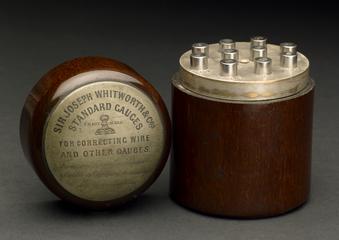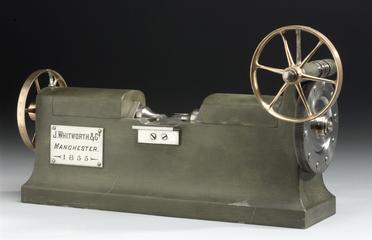
Set of Johansson gauge blocks, c 1900.
- Made:
- 1896-1918

Set of Johansson gauge blocks, imperial measurement, in oak case (81 in all)
Set of Johansson gauge blocks, c 1896-1918. Carl Edward Johansson (1864-1943), armourer-inspector at the Carl Gustavs Stad Rifle factory,Eskilstuna, Sweden, invented the combination gauge block set in 1896, to supercede the large number of individual gauges previously used. The sizes of the individual blocks were chosen so that, by combination, any required dimension within the overall range of the set could be obtained. Stacks of blocks were used to verify the dimensions of the gauges actually used in manufacture and inspection of the product. The blocks are hardened, and finished very accurately to size. Their faces are so flat that under some circumstances adjacent blocks actually cling together; normally, they are held in fixtures for use. Such blocks remain an important standard of reference for many manufacturing purposes, even today.
Details
- Category:
- Industrial Metrology
- Object Number:
- 1919-483
- Materials:
- hardened steel
- Measurements:
-
box open.: 11.2205 x 15.748 x 10.3543 in.; 28.5 x 40 x 26.3 cm
- type:
- gauge block
- credit:
- Ministry of Munitions




